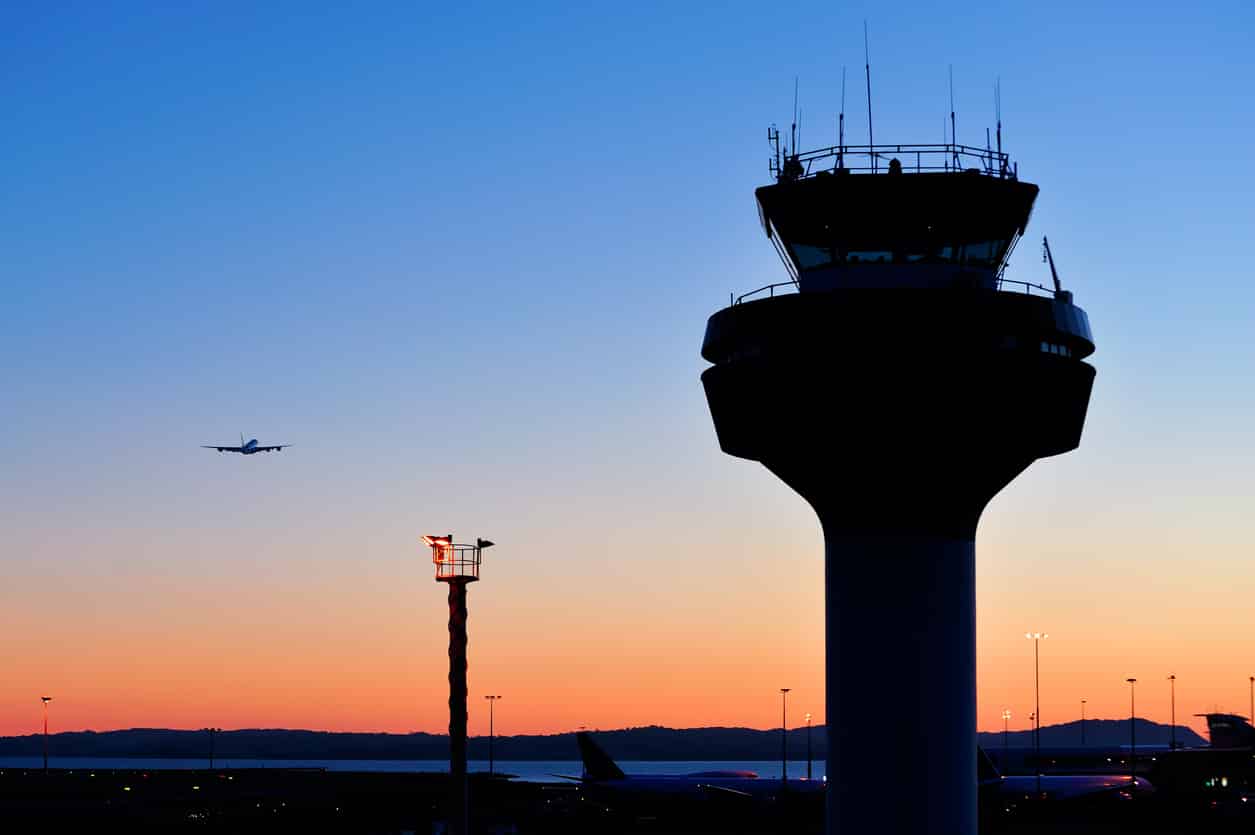Air Traffic Control's Impact on Aircraft Safety
Air Traffic Control (ATC) is a necessity to ensure the safety of aircraft and to maximize operational efficiency. ATC is separated into different facilities to be more applicable to the airspace under control and to divide the workload among controllers. Typically an aircraft will start in terminal airspace where they will be under control of a control tower. Then if the pilots file for an IFR flight plan and leave the terminal airspace, they will likely transfer to another ATC facility such as Radar Approach Control or Air Route Traffic Control Centers (ARTCC). All air traffic controllers within the United States operate under the FAA JO 7110.65 and could also have local regulations to make operations more restrictive depending on the local operations.
Tower controllers focus on the immediate airspace surrounding the airport. For example, Seymour Johnson AFB terminal airspace is ten nautical miles in diameter and extends from the surface up to and including 2,500 ft MSL. The important positions that are in the tower are typically local control, ground control, and watch supervisor. Local Control is the position that directly communicates with aircraft either on the runway or in the local airspace. They are there to ensure separation is maintained between aircraft and issue safety alerts as needed (FAA, 2021). Local controllers also provide many advisories that can help prepare a pilot for the scenario or to help provide reason to recommend an altered course if appropriate. Ground control may only use ground control frequencies to communicate with aircraft on the ground only (FAA, 2021). Ground control can help ensure that aircraft will not come to each other at nose to nose and provide separation between small aircraft and heavy aircraft or hover taxiing helicopters (FAA, 2021). Local and ground can help ensure aircraft are moved efficiently and if needed for certain operations, expedite/prioritize their movement. Watch supervisor is the safety net for all operations that occur while the tower is open. They also ensure that the verbage and instructions given by controllers are legal and correct. ARTCC provides instructions for aircraft already airborne and en route to their destination (FAA, 2021). They may also control terminal facilities when required such as New Bern Center controlling Seymour Johnson AFB terminal airspace as needed. ARTCC controllers main job is to separate aircraft and provide safety alerts as well (FAA, 2021). They ensure that the airways are used appropriately to avoid conflicts with aircraft and provide traffic alerts to aircraft that may come in close proximity. While ARTCC is controlling and separating IFR aircraft among each other, they must also separate IFR aircraft from special use airspace such as military operation areas (FAA, 2017).
Since both of these air traffic control entities follow the same regulations, they are very similar in the ways they ensure aircraft are safe. The differences regarding the safety of aircraft are subtle and mainly references what the regulations, local and FAA, state that each facility must follow. One difference is that one of tower's primary purpose is to control ground traffic by ensuring that personnel and small aircraft are at a safe proximity from large or heavy aircraft. Whereas ARTCC is primarily focused on separating aircraft from each other and hazards that are out of the terminal environment and en route to their next destination.
References
FAA. (2017). Pilot’s Handbook of Aeronautical Knowledge (Federal Aviation Administration):
FAA-H-8083-25B. Federal Aviation Administration.
FAA. (2021, May 5). JO 7110.65Z - Air Traffic Control. Federal Aviation Administration.
https://www.faa.gov/documentLibrary/media/Order/7110.65Z_ATC_Bsc_dtd_6-17-21.pdf

Comments
Post a Comment